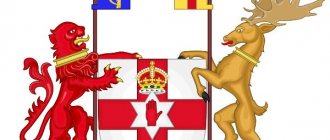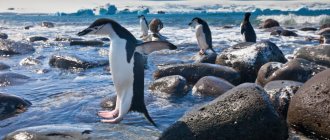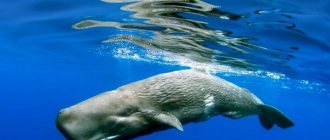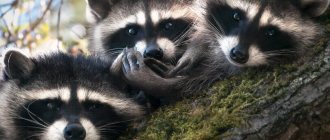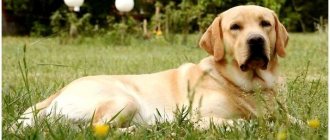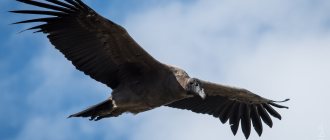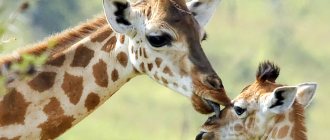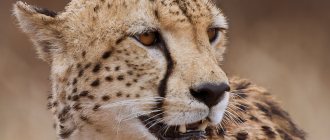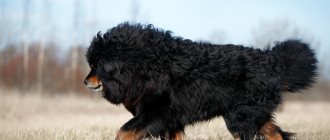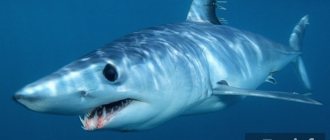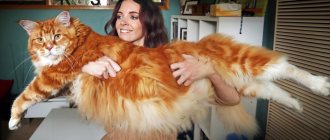The artiodactyl family is traditionally divided into three suborders: non-ruminants, camelids and ruminants.
Classically, non-ruminant artiodactyls consist of three extant families: Suidae (pigs), Tayassuidae (collared peccaries), and Hippopotamides (hippopotamuses). Many modern taxonomies place hippopotamuses in their own suborder, Cetancodonta. The only extant group within the camelids is the family Camelidae (camels, llamas and wild camels).
The ruminant suborder is represented by such families as: Giraffidae (giraffes and okapi), Cervidae (deer), Tragulidae (lesser deer and fawns), Antilocapridae (pronghorns) and Bovidae (antelope, cattle, sheep, goats).
The subgroups differ in different characteristics. Porciniformes (pigs and peccaries) retain four toes of approximately the same size, have simpler molars, short legs, and often enlarged canines. Camels and ruminants tend to have longer limbs, step only with the central two toes (although the outer two survive as rarely used vestigial toes), and have complex cheeks and teeth well suited for grinding tough grasses.
Comparison
Artiodactyls are an order of Mammals. It includes 3 suborders:
- ruminants - deer, giraffes, bulls, pronghorns, sheep, bison and antelopes;
- calloused - camels;
- non-ruminants - hippopotamuses, pigs and peccaries.
Artiodactyls are animals whose developed ends of the third and fourth classes are covered with a special case - the hoof. At the same time, their first finger is reduced, and the second and fifth are underdeveloped.
Artiodactyls are large and medium-sized animals. They have a characteristic elongated muzzle, and ruminants also have the obligatory decoration in the form of horns.
Artiodactyls are common on all continents except Antarctica. Initially, they were not only in Australia, but man “corrected” this oversight of Nature. Most of them live in open spaces (savannas, deserts, tundra, steppes). A minority of the squad chose the forest to live.
Deer. Order Artiodactyls
Odd-toed ungulates are an order of Mammals. Today, only 3 families of the once numerous taxon remain on Earth:
- the Equine family - horses, zebras and donkeys;
- Tapirov family;
- Rhino family.
Odd-toed ungulates are animals whose hoofs “cover” an odd number of toes.
Even-toed ungulates were once common on all continents except Antarctica and Australia. But in the wild, representatives of certain families can only be found in Africa, South and Central America, and Southeast Asia.
In addition to the number of phalanges forming the limbs, another characteristic difference between the two orders of these animals, which formed the basis of the taxonomy, is the structure of the digestive system. The fact is that in equids the main digestion of food occurs in the large intestine, and in artiodactyls - in the stomach. Therefore, in equids the stomach is single-chambered, while in artiodactyls it consists of four sections - the rumen, the mesh, the book, and the abomasum.
Spreading
On all continents except Antarctica, the family of artiodactyls has taken root. Introduced, domesticated and released into the wild in Australia and New Zealand. For this species, ocean islands are not a natural environment, but even on small, remote archipelagos in the Ocean, representatives of these species survive. Artiodactyls live in most ecosystems from the Arctic tundra to the tropical forest, including deserts, valleys and mountain peaks.
Animals live in groups, even if groups are limited to two or three individuals. However, gender tends to determine the composition. Adult males live separately from females and young animals.
Non-ruminant artiodactyls
Representatives of the order Artiodactyls are distinguished by the structural features of the digestive system. Pigs and hippos are non-ruminants. They are distinguished by a massive body and relatively short limbs, on which there are four fingers. Their digestive system has a standard structure for representatives of mammals. The stomach is simple, not differentiated into sections. Representatives of non-ruminants are widely known. For example, a large ungulate animal is a wild boar or pig. It is easily recognized by its elongated muzzle with a bare “penny” around the nostrils. With its help, the animal digs the ground, obtaining food. The wild boar lives mainly in oak and beech wet forests and dense bushes. Another striking example of non-ruminant ungulates is the hippopotamus, or hippopotamus.
This is a real giant, weighing more than three tons. His thick skin needs constant hydration. Therefore, hippos lead a semi-aquatic lifestyle. They are common in tropical East and Central Africa. However, as a result of poaching, they can most often be found in protected areas.
What to feed pigs? Pig diet
The pig is an omnivore; it eats absolutely everything. In the wild, the main food is what can be dug in the ground: plant roots, worms, insect larvae, as well as tree bark, young plant shoots, and grass. Acorns, nuts and mushrooms are considered a special delicacy. Food of animal origin, in addition to worms and larvae, can be fish, shellfish, birds, rodents, frogs, and carrion.
At home, pigs need high quality food:
- a combination of beneficial herbs, such as nettle or alfalfa;
- vegetables (sugar beets, pumpkin, potatoes);
- grains and cereals (peas, barley, millet);
- dairy products and meat waste;
- feed concentrates;
- food supplements containing vitamins and minerals.
Appearance
General information
Due to adaptation to different habitats, equids have developed significant differences in body structure over time. Common features exist in the structure of the limbs and teeth. All modern and the vast majority of extinct species are quite large animals. Representatives of the rhinoceroses family occupy the second place (after elephants) in size among land mammals. The extinct Indricotherium, a hornless relative of rhinoceroses from the Oligocene era, is even considered the largest land mammal of all time. However, some early representatives of the order, such as the ancestral horse Hyracotherium, were small, reaching a height at the withers of only 20 cm. With the exception of some artificially bred dwarf horse breeds, modern equids reach a body length of 180 to 420 cm, and their weight is 150–3500 kg . Their hairline also varies. While in rhinoceroses it is sparse and is compensated by a thick epidermis, tapirs and horses have thicker, short hair. Most species are gray or brown. Zebras, however, are characterized by black and white vertical stripes. A similar horizontal pattern can be seen in baby tapirs.
Limbs
The main load of the front and hind limbs falls on the center, which is why the third finger is the longest toe in all species. The remaining fingers atrophied to varying degrees, least of all in tapirs. These animals, due to the soft soils in their habitat, have four toes on their front feet and three on their hind feet. In horses, the atrophy of the lateral toes is most advanced; they have only one toe. The limbs end with hooves, which, however, only in horses completely cover the toes. In rhinoceroses and tapirs, only the front part of the leg is covered with hooves, and the underside is soft. Rhinoceroses have fairly soft feet.
In the limbs, the femur and fibula are reduced; in horses, they are fused with the tibia. An exceptional feature of equids is the special joint between the talus and navicular bones, which greatly limits their mobility.
Skull and teeth
Skull of a domestic horse ( Equus caballus
)
Perissodactyls, as a rule, have an elongated head, distinguished primarily by a long upper jaw. Different forms of the jaw apparatus of individual families come from different structures of the Praemaxillare
. There is a growth on the lacrimal bone that protrudes into the orbit. The wide contact between the lacrimal and nasal bone is unique. In species that feed primarily on grass, the jaws are particularly massive. The jaw joint is located quite deep, and the lower jaw is enlarged.
Rhinoceroses have one or two horns, which, unlike the horns of artiodactyls, are not made of bone, but of keratin.
The number and structure of teeth varies depending on nutrition. Incisors and canines may be very small or absent altogether, as in African rhinoceros species. In horses, only males usually have fangs. Due to the elongated upper jaw, there is a space between the front and side teeth called a diastema. Premolars are usually developed like molars. The surface and height of the molars greatly depends on whether the animal feeds more on soft leaves or hard grass. There are three to four premolars and three molars on each half of the jaw. The dental formula is as follows: I 0-3/0-3 °C 0-1/0-1 P 3-4/3-4 M 3/3.
Dairy cows
Aishirskaya
Cows are reddish brown, mahogany in color, ranging from light to dark in shade on a white background. Some bulls are so dark in color that they appear almost black. The spots are usually jagged at the edges, small and scattered throughout the body.
These are medium-sized cows, at maturity they weigh more than 550 kg, are strong, hardy, stand calmly in stalls on dairy farms, and adapt to milking machines due to the shape of the udder, and are not susceptible to leg problems.
Few other breeds match the Ayshire cow's ability to thrive in unfavorable feeding conditions or climate. Cows do not have yellow fat, which reduces the value of the carcass, so Ayrshires are raised as steers. The breed's milk has a moderate fat content.
Jersey
The cows are usually light brown, although they can be almost gray and dull black. They may also have white spots that cover most of the carcass. A true Jersey cow always has a black nose and an almost white muzzle around the mouth. Strong legs are less prone to injury.
Cows are relatively small in size, around 400-450 kg.
The Jersey breed produces milk more efficiently than other breeds. This is especially important in countries where feed is scarce and makes the breed a profitable option for agriculture.
Holstein
The breed is recognizable due to its black and white or red and white pattern, milk production, and large body. A healthy Holstein calf weighs 40 kg or more at birth. A mature Holstein cow weighs about 680 kg. The normal productive life of the Holstein breed is six years.
Cows produce more milk than other breeds. They have an unmatched genetic ability to improve without a biological ceiling. Genetic improvements of 1 to 2% per year are absolutely realistic.
Cows adapt to being kept on closed farms, partial and free grazing. Also, living conditions do not matter; animals feed in highlands and lowlands.
Classification
Phylogeny
Below is a cladogram showing the phylogenetic position of the taxon:
| Paraxonia | Porciniformes | ||||||||
| Whale ruminants | Ruminantiamorpha
|
Digestive system
Artiodactyls have one or more digestive chambers located in front of the glandular stomach (abomasum). Most members of the ruminant suborder (Ruminantia) have a four-chambered stomach, consisting of sections such as the rumen, reticulum, book and abomasum. This suborder includes ruminant mammals such as cattle, goats, sheep, giraffes, American bison, European bison, yaks, Asiatic buffalo, deer, etc.
However, deer (family Tragulidae) within the ruminant suborder Ruminantia have a three-chambered stomach. Likewise, members of the suborder Tylopoda (camels, alpacas, llamas) have a three-chambered stomach.
Note that all of these animals are still considered "ruminants", although camels are not classified in the suborder Ruminantia. This is because the term ruminant simply means any artiodactyl that digests food in two stages, first softening it in the first stomach, known as the rumen, then regurgitating the semi-digested mass, now known as the cud, and chewing it again. Therefore, the term "ruminant" is not synonymous with Ruminantia.
Pigs and peccaries have only one small chamber in front of the abomasum, while hippopotamuses have two. While hippos have a three-chambered stomach, they do not “chew the cud.” Hippos consume grass during the night and during this time they eat about 68 kg. They depend on microorganisms that process rough fiber in their stomach.
Most species of pigs have a simple two-chambered stomach that allows for an omnivorous diet; babirussa, however, is a herbivore. They have extra teeth to ensure proper chewing of plant material. Most fermentation occurs in the cecum with the help of cellulolytic microorganisms.
Description
All cetaceans have a number of common features: they have a streamlined body shape; forelimbs - flippers; there are vestigial hind limbs (which are located inside the body); no external toes or claws; flattened tail; they have vestigial auricles; as a rule, there is no hair (although some young cetaceans have bristle-like vibrissae); there is a thick subcutaneous layer of fat; there is a massive head elongated into a rostrum or “beak” and a short neck; no sweat glands; there are internal reproductive organs and a multi-chambered stomach; their airways are equipped with valves and also have external nostrils. Many of these characteristics are adaptations to reduce drag while swimming. Protrusions such as external ears or genitals would make it difficult for animals to move through water.
Blue whale
Cetaceans are white, black, grey, bluish-gray or pink, and many are spotted, speckled, striped or patterned. These are large animals ranging in size from 20 to 180,000 kilograms and from 1.2 to 30 meters. Blue whales ( Balaenoptera musculus
) - that ever existed.
Some species have a pronounced For example, female blue whales are larger than males, and male bottlenose dolphins ( Tursiops truncatus
) are larger than females.
In some species, such as ( Monodon monoceros
) and beaked whales (
Ziphiidae
), males have enlarged, protruding teeth that can be used as weapons when fighting other males.
Some cetaceans are considered very intelligent, and many have proportionately large brains. They also have efficient lungs and circulatory systems, allowing them to dive for long periods of time. Cetaceans use about 12% of the oxygen they inhale, compared to 4% used by land mammals. They also have at least twice as many red blood cells and myoglobin molecules in their blood to efficiently absorb and transport oxygen. When cetaceans dive, their heart rates slow down by 80 beats per minute, so their bodies use less oxygen.
Cetaceans are found in all types of climates, including areas where sea water is very cold. Small representatives of the order can cope with cold temperatures, as they have a high metabolic rate. Large cetaceans lose little heat to their environment. Both small and large animals have a thick layer of subcutaneous fat.
Cetaceans have 42 to 44 v.
Second evolutionary theory
There is another version of the evolution of pigs. It's not that popular, but that doesn't mean it's wrong.
It says that wild boars evolved from small mammals of the Holocene era. These were creatures with enormous adaptability that were able to survive despite numerous natural disasters.
Then the species mutated, increased in size, and after several turns of evolution turned into the familiar appearance of a wild boar.
Reproduction
Most artiodactyls have a polygynous reproductive system, although some species are seasonally monogamous (for example, the blue duiker). Artiodactyls usually breed only once a year, although some of them can breed several times. The gestation period varies from 4 to 15.5 months.
In addition to pigs, which can give birth to up to 12 young at a time, other artiodactyls give birth to up to two young, once a year. The weight of artiodactyls at birth can vary from 0.5 to 80 kg. Puberty occurs between 6 and 60 months of age. The cubs of all artiodactyls are able to walk independently within a few hours after birth, and some are already running after 2-3 hours. Females care for their offspring and feed them with their milk for 2-12 months after birth.
Behavior
The social behavior of artiodactyls varies depending on the species. Although some artiodactyls are solitary, most are quite social. It is believed that even-toed ungulates that live in large groups eat more vegetation because they do not have to constantly scan the area and watch for approaching predators. However, if the group size increases sufficiently, competition within the same species may occur.
Species living in groups often have a hierarchy among both males and females. Some species also live in harem groups, with one male, several females and their shared offspring. In other species, females and young remain together while males are solitary or live in bachelor groups, seeking females only during mating season.
Many artiodactyls are territorial and mark their territory, for example, with specialized glands, feces or urine. There are species that migrate seasonally, while others remain in the same habitat throughout the year. Artiodactyls can be diurnal, crepuscular, or nocturnal. In some species, the period of wakefulness varies depending on the season or habitat.
Odd-toed ungulates and humans
Rider
The domestic horse and domestic donkey have played a large role in human history as animals for riding, transporting goods, and farming. Domestication of both species began several thousand years BC. Due to the motorization of agriculture and the spread of motor vehicles, the importance of these animals in developed countries has decreased. Nowadays they are maintained mainly for sporting purposes or as a hobby. However, in less developed regions of the planet, the use of equids is still widespread. To a lesser extent, they are kept and bred for meat and milk.
Unlike domestic horses and donkeys, the populations of all other species of equids have declined sharply due to hunting and destruction of living space. The quagga has disappeared, and the Przewalski's horse is also close to extinction. Four species - the African ass, Sumatran rhinoceros, Javan rhinoceros and black rhinoceros - are designated by the IUCN as critically endangered
).
Five other species—Grévy's zebra, mountain zebra, mountain tapir, Central American tapir and Indian rhinoceros—are considered endangered
.
Omnivores or herbivores
The order of artiodactyls includes many animals: hippopotamuses, antelopes, pigs, giraffes, goats, bulls and a huge number of other species. All artiodactyl animals (a horse is an odd-toed ungulate animal) have hooves at the ends of the phalanges of the toes - hard horny sheaths. The limbs of these animals move parallel to the body, which is why artiodactyls have no clavicles. The vast majority of artiodactyls live in terrestrial systems, but hippos spend most of their time in the water. Most artiodactyls are capable of moving very quickly.
It is believed that artiodactyls appeared in the Lower Eocine. The ancestors of these animals were primitive predators. Currently, all continents except Antarctica are inhabited by these animals. However, artiodactyls appeared in Australia artificially - brought by humans for the purpose of use in agriculture.
Nowadays, a rich list of extinct artiodactyls is known, most of which disappeared due to human fault. Many species are listed in the Red Book and are on the verge of extinction. These are Sakhalin musk deer, bison, Chukchi bighorn sheep, Ussuri spotted deer, gazelle and many others.
Is it possible to understand on your own which animals are artiodactyls? Yes, and it's not too difficult to do. In order to make sure that an animal belongs to this order, you just need to look at its legs. If the hoof is divided in half, then it is an artiodactyl animal. If there is no opportunity to look at the legs, it is enough to remember the close relatives of this species. For example, you cannot see the legs of a mountain sheep, but you are well aware that its domestic relative is a goat. Her hooves are split in half. Accordingly, these are artiodactyls.
Calloused
Callopods are the least diverse suborder of artiodactyls. It includes only the camelid family, which, in addition to camels, also includes llamas and vicuñas. Their limbs have two fingers, which do not have hooves, but have large curved claws. The foot is soft, and on its sole there is a large calloused pad.
Almost all callosopods have been domesticated by humans. They are bred in Asia, Africa and South America. The only free-living camel in Australia is the dromedary camel, which has become wild again.
Animals have an elongated neck and slender long legs. Camels have one or two humps on their backs. They can live in mountainous and desert areas and can tolerate the absence of water and food for a long time. People breed them for their thick and soft wool, meat, and also use them as beasts of burden.
Interesting facts about cows
- Cow dung is an excellent fertilizer and is widely used in farming.
- For the inhabitants of India, since ancient times, the cow has been a sacred animal, the embodiment of the Great Mother Aditi and the earth, and sometimes the Universe. According to the Vedas, the cow is connected with the dawn and the sun, it is protected by universal laws and Vishnu (the Supreme Personality of Godhead) personally, cow killers go to hell. In India, the cow still remains a sacred animal, and the expression “sacred cow” means something inviolable, sacred, which is carefully protected from everything around. For example, a “sacred cow” can be a science that a person believes in or a religion.
- In the mythologies of different peoples, cows performed cosmic functions: the Egyptians described the heavenly cow Nut, who gave birth to the sky and was the personification of the Heavenly Ocean. In Memphis she was a symbol of Venus, the generative force. Pregnant cows are considered a female symbol, life-giving and nourishing with the power of the earth; together with the bull, they symbolize the unity of the feminine and masculine principles, giving birth and nurturing. The ancient Greeks made images of a cow with a calf sucking its udder, which indicated the multiplication of divine powers feeding themselves.
Non-ruminants
The non-ruminant suborder includes only three families: hippopotamidae, porcineaceae and peccaryidae. All of them are large and massive animals. They have four fingers, their limbs are significantly shortened, compared to other mammals of the artiodactyl order, the structure of the stomach is simplified.
Pigs live in Eurasia and Africa, wild peccaries inhabit North and South America. Both families are very similar to each other. They have large heads with an elongated front, and short necks. The upper fangs are well developed and protrude from the mouth either to the sides or strictly vertically.
Hippos live only in Africa and are one of the largest animals in the world. Hippos can grow up to 3.5 meters in length and weigh between 2 and 4 tons. They spend most of their time in the water and can dive and swim quickly. Two powerful lower fangs weighing up to three kilograms peek out from the mouth of hippopotamuses. Because of them, animals become frequent victims of poachers.
conclusions
By comparing artiodactyls and even-toed ungulates, the following main conclusions can be drawn:
- The number of toes of artiodactyls and even-toed ungulates is different. The former have about 4 toes that form the hoof; anisodactyls have an unpaired number of toes.
- In the wild, artiodactyls are more common than equids.
- The digestive system of artiodactyls is more complex than that of equids. First, the stomach is divided into several chambers.
The class of mammals includes all orders of artiodactyls and odd-toed ungulates. Both orders are also subdivided into families, among which there are different representatives of the species. Despite their differences, representatives of both orders help people farm and provide other benefits to the ecosystem.
